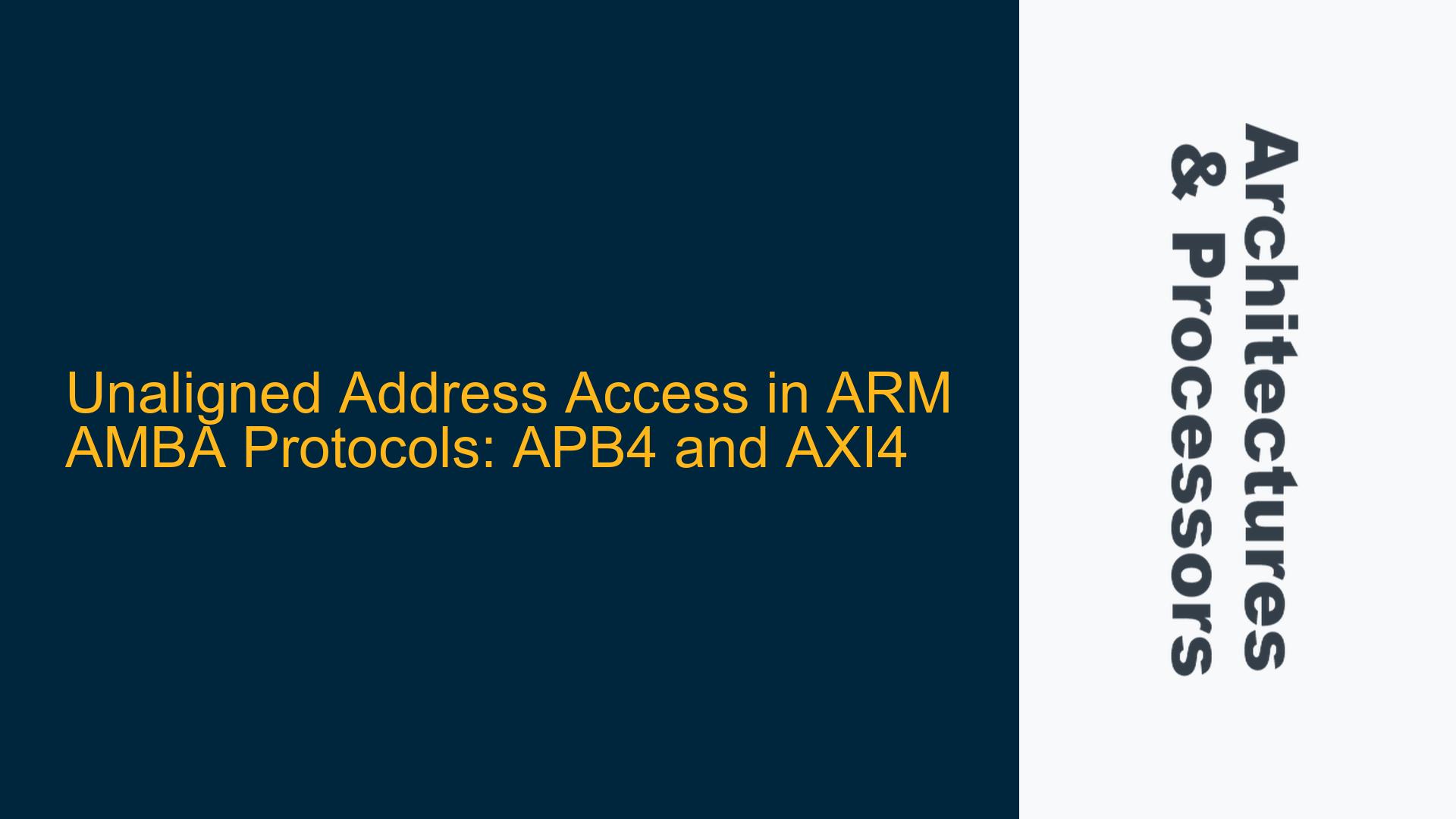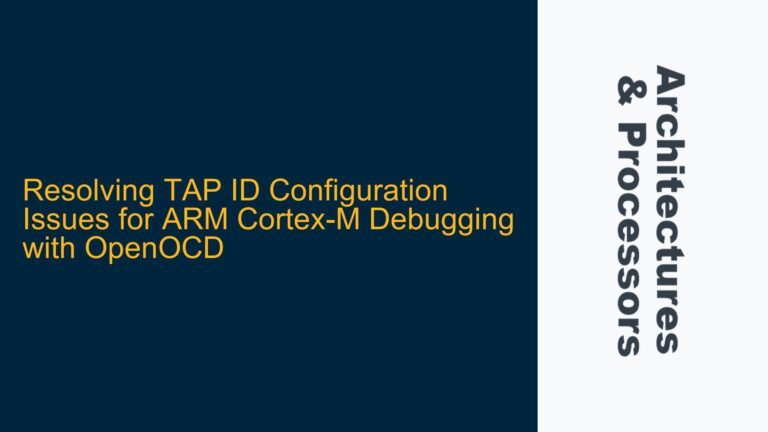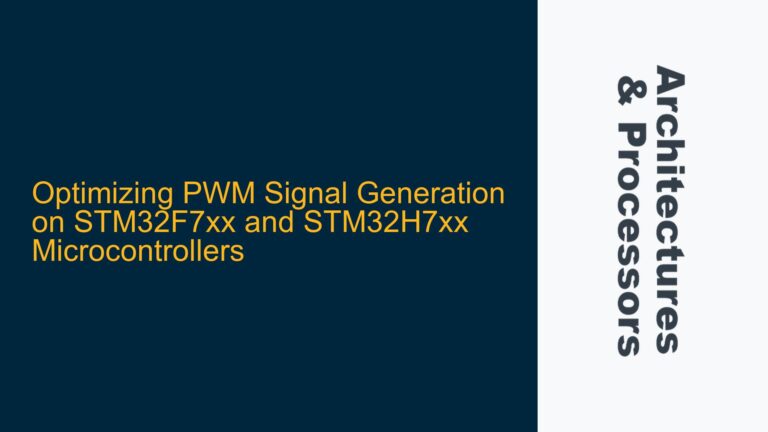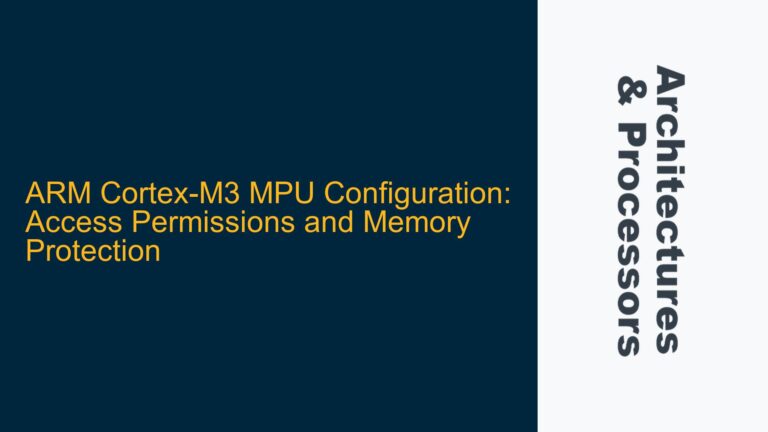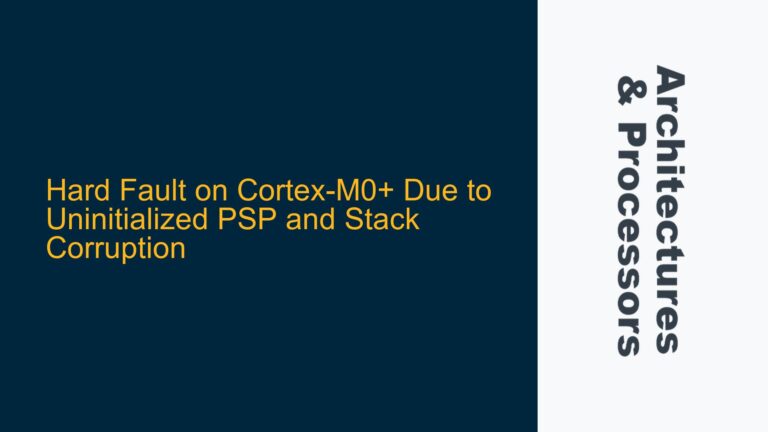Understanding Unaligned Address Access in ARM AMBA Protocols
Unaligned address access is a concept that arises in the context of memory transactions within ARM AMBA (Advanced Microcontroller Bus Architecture) protocols, particularly in AXI4 (Advanced eXtensible Interface 4) and APB4 (Advanced Peripheral Bus 4). The term "unaligned" refers to memory accesses where the starting address of a data transfer is not a multiple of the data size being transferred. For example, in a 32-bit system, an aligned access would start at addresses like 0x0, 0x4, 0x8, or 0xC, whereas an unaligned access might start at 0x1, 0x5, or 0x9.
In ARM-based SoCs, memory alignment is crucial for performance and correctness. Aligned accesses are generally more efficient because they match the natural boundaries of the memory system, allowing for faster data retrieval and storage. Unaligned accesses, on the other hand, can lead to performance penalties, as they may require multiple memory transactions to complete a single transfer. Additionally, unaligned accesses can cause issues in systems where the hardware or software expects data to be aligned.
The concept of unaligned address access is explicitly supported in AXI4, where the protocol allows for unaligned transfers by splitting them into multiple aligned transactions. However, in APB4, the situation is different. APB4 is a simpler protocol designed for low-bandwidth, low-complexity peripheral accesses, and it does not inherently support unaligned address access. Many APB4 slaves are designed to handle only aligned accesses, as they are typically used for register accesses where alignment is naturally enforced.
Memory Alignment Requirements and Protocol-Specific Behavior
The behavior of unaligned address access varies significantly between AXI4 and APB4 due to their different design goals and use cases. In AXI4, unaligned accesses are handled by the protocol itself, which splits the unaligned transfer into multiple aligned transactions. This is possible because AXI4 is a high-performance protocol designed to handle complex memory transactions, including burst transfers, out-of-order transactions, and unaligned accesses.
In contrast, APB4 is a much simpler protocol, primarily used for accessing peripheral registers. APB4 does not have built-in support for unaligned accesses, and most APB4 slaves are designed to handle only aligned accesses. This is because APB4 is typically used in scenarios where the data being transferred is small and aligned, such as reading or writing to control registers in a peripheral. As a result, attempting to perform an unaligned access on an APB4 bus may result in an error or undefined behavior, depending on the specific implementation of the APB4 slave.
The difference in handling unaligned accesses between AXI4 and APB4 highlights the importance of understanding the specific requirements and limitations of each protocol when designing an ARM-based SoC. In AXI4, unaligned accesses are a supported feature that can be used to optimize data transfers, but they must be carefully managed to avoid performance penalties. In APB4, unaligned accesses are generally not supported, and designers must ensure that all accesses are aligned to avoid errors.
Implementing and Verifying Unaligned Address Access in ARM SoCs
When implementing unaligned address access in an ARM-based SoC, it is essential to consider the specific requirements of the target protocol (AXI4 or APB4) and the capabilities of the hardware components involved. For AXI4, the protocol’s support for unaligned accesses can be leveraged to optimize data transfers, but this requires careful design and verification to ensure that the system can handle unaligned accesses efficiently and correctly.
In AXI4, unaligned accesses are typically handled by the AXI interconnect, which splits the unaligned transfer into multiple aligned transactions. This process is transparent to the master and slave devices, but it can introduce additional latency and complexity into the system. To minimize the performance impact of unaligned accesses, designers should aim to align data structures in memory and use aligned accesses whenever possible. When unaligned accesses are necessary, the AXI interconnect should be configured to handle them efficiently, and the system should be thoroughly verified to ensure that all corner cases are handled correctly.
For APB4, the lack of support for unaligned accesses means that designers must ensure that all accesses are aligned. This can be achieved by carefully designing the memory map and ensuring that all peripheral registers are aligned to the appropriate boundaries. In some cases, it may be necessary to add additional logic to handle unaligned accesses, such as by using a bridge or wrapper that converts unaligned accesses into aligned accesses before they are passed to the APB4 slave. This approach can add complexity to the design, but it may be necessary to ensure compatibility with existing hardware or software that expects aligned accesses.
Verification of unaligned address access in ARM SoCs requires a comprehensive test plan that covers both aligned and unaligned accesses. For AXI4, this includes testing the AXI interconnect’s ability to handle unaligned accesses correctly, as well as verifying that the system can handle the additional latency and complexity introduced by unaligned accesses. For APB4, the focus should be on ensuring that all accesses are aligned and that any additional logic added to handle unaligned accesses functions correctly. This can be achieved using a combination of simulation, formal verification, and hardware testing, depending on the specific requirements of the design.
In conclusion, unaligned address access is an important consideration in ARM-based SoC design, particularly when working with AXI4 and APB4 protocols. Understanding the differences in how these protocols handle unaligned accesses is crucial for designing efficient and reliable systems. By carefully considering the requirements of each protocol and implementing appropriate design and verification strategies, designers can ensure that their systems can handle unaligned accesses correctly and efficiently.
